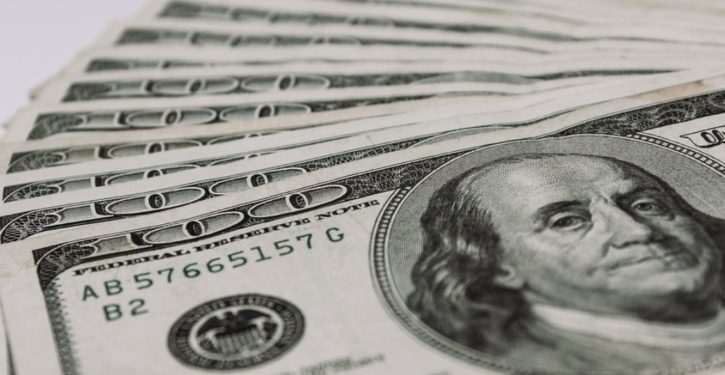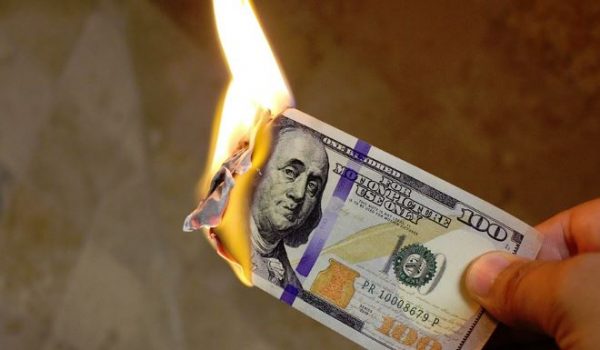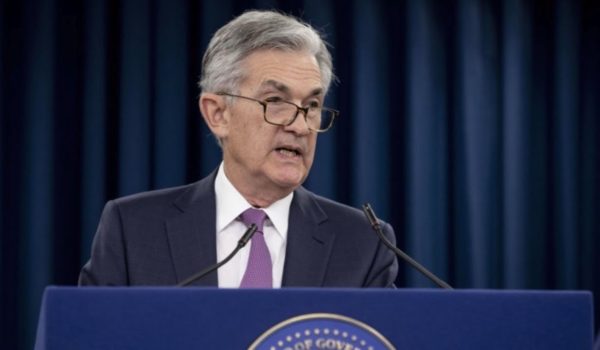
“A new estimate just out from the non-partisan Penn Wharton Budget Model analysts show that the student-loan forgiveness plan — aka the Academia Bailout — will cost at least $519 billion just on debt forgiveness. Total costs to taxpayers could run a cool trillion dollars, once dynamic issues get assessed,” notes Ed Morrissey.
It’s also illegal. As the College Fix notes, “An analysis from the Texas Public Policy Foundation concluded that an executive order bailout is likely illegal. Alan Dershowitz, professor emeritus at Harvard Law school, has also said that a student bailout through executive action would be illegal.”
Researchers at the University of Pennsylvania’s Wharton Business School explain why Biden’s bailout could cost more than a trillion dollars:
President Biden’s new student loan forgiveness plan includes three major components. We estimate that debt cancellation alone will cost up to $519 billion…Loan forbearance will cost another $16 billion. The new income-driven repayment (IDR) program would cost another $70 billion, increasing the total plan cost to $605 billion under strict “static” assumptions. However, depending on future IDR program details to be released and potential behavioral (i.e., “non-static”) changes, total plan costs could exceed $1 trillion.
At least $535 billion of the cost will take place in this fiscal year:

This single year cost is so huge, that it is similar in order of magnitude to the projected ten-year cost of Obamacare, notes John McCormack of the National Review:
One trillion dollars — $940 billion to be precise — was the Congressional Budget Office’s official ten-year cost estimate of Obamacare when Congress was debating the massive expansion of government in 2010. Now, President Biden is possibly taking that much money from U.S. taxpayers with a lawless stroke of a pen to provide a bailout that will overwhelmingly benefit Democratic voters a couple months before an election.
The Biden plan will cause tuition to increase more rapidly, primarily due to its income-driven repayment (IDR) provisions, as even progressives concede. As the Washington Post has chronicled, those plans encourage colleges to raise tuition like crazy, because “under income-based repayment, your payments vary with your income, not the size of the loan” you took out to pay for tuition. So you don’t mind borrowing more money, because as your debt increases, your payments remain the same (and the unpaid loan balance is written off after 10 or 20 years). As a result, if you are a student, your college will raise tuition more, and you will borrow more money to pay that tuition, knowing that taxpayers will some day pay off your IDR program loans.
At the People’s Policy Project, Matt Bruenig explains how those IDR plans encourage students to like taking on lots of debt (which will be written off in the future under the Biden plan) and colleges to like tuition increases fueled by debt:
Just as schools have new incentives to push debt loads higher in an IDR-dominant world, so do students. Above, I say that, for students planning to enroll in IDR, $15,000 of student debt is no different than $100,000 of student debt. But this is not quite right. A student planning to enroll in IDR actually benefits from taking out the maximum amount of debt possible.
Student loans are initially paid to schools to cover the tuition and fees. But what’s left after tuition and fees is disbursed as cash to the students, ostensibly to cover living expenses. In a conventional student loan, you have reason to live frugally and take out as little debt as possible. But if you are planning to go on IDR, then your incentives flip and you are leaving money on the table if you don’t take out the maximum loan possible.
Even if you don’t want to spend it living lavishly while in college, you could squirrel away the surplus into a savings account for later use, including for use in making your IDR payments after you graduate. Indeed, this is just a student-administered version of the LRAP scheme discussed above where student debt is used to pay off student debt….
A student that plans to enroll in IDR has no reason at all to care about the prices colleges are charging. To them, $15,000 of student debt is no different from $100,000 of student debt….
To see how this can play out in practice, consider the Loan Repayment Assistance Programs (LRAPs) that many law schools already have. Law schools provide a good view into this question because law graduates have been enrolling in IDR programs at high numbers for a long time and law schools have some ability to determine who is likely to use IDR upon graduation based on the kind of law they plan to go into.
Under the Public Service Loan Forgiveness (PSLF) program, law graduates that go on to work in the public sector, which is a lot of them as the public sector employs many lawyers, only have to pay 10 percent of their discretionary income for 10 years in order to have their debt forgiven.
Law schools figured out many years ago that, for a student who is planning to enroll in PSLF upon graduation, prices and debt loads don’t matter. Ten percent of your discretionary income is ten percent of your discretionary income regardless of what the law school charges you and how much debt you nominally have to take on.
Law schools also realized that they could make the deal even sweeter by setting up LRAPs that give graduates money to cover the the modest repayments required by the PSLF.
The LRAP schemes work as follows:
- The school increases their tuition.
- The student takes out federal loans to cover the tuition increase.
- The school squirrels away the debt-financed tuition increase into an LRAP fund.
- The school disburses money from the LRAP fund to cover PSLF repayments.
Through this roundabout process, the law schools effectively use student debt to pay off student debt and make their schools free, at least for these particular students.
Under the IDR scheme proposed by Biden, the regular IDR program will become a little more generous than the current PSLF program that the law schools have so effectively gamed. It’s impossible to say for sure how schools will respond to that, but schools have already shown themselves quite adept at optimizing within the financial aid constraints and not just the law schools.
At some point, it seems like expensive private universities will realize that providing tens of thousands of dollars of need-based discounts to certain borrowers who are likely to wind up on IDR does not make sense and that they should instead charge the maximum amount a student can cover through federal loans. As the law schools show, the surplus generated by that scheme could even be shared a bit with the students via an LRAP.
The White House on August 24 announced the Education Department’s intent to revise income-driven repayment plans in a way that would allow students who foolishly attend expensive colleges to largely avoid repaying their loans, by cutting their payments by well over half. As a result, many borrowers will pay only a trivial amount each month, and can stop paying anything at all after 10 or 20 years, no matter how much of their student loan balance remains. The remaining student loan balance will be written off, at taxpayer expense.
The White House “Fact Sheet” explained these changes, which will be very expensive to taxpayers:
The Department of Education has the authority to create income-driven repayment plans, which cap what borrowers pay each month based on a percentage of their discretionary income. Most of these plans cancel a borrower’s remaining debt once they make 20 years of monthly payments….the Department of Education is proposing a rule to do the following:
- For undergraduate loans, cut in half the amount that borrowers have to pay each month from 10% to 5% of discretionary income.
- Raise the amount of income that is considered non-discretionary income and therefore is protected from repayment, guaranteeing that no borrower earning under 225% of the federal poverty level—about the annual equivalent of a $15 minimum wage for a single borrower—will have to make a monthly payment.
- Forgive loan balances after 10 years of payments, instead of 20 years, for borrowers with original loan balances of $12,000 or less.
As the White House explained, this would largely wipe out loan repayments by many borrowers who are “typical” of their occupation — it gives the example of one borrower who “would pay only $56 a month on their loans, compared to the $197 they pay now,” and another who “would pay only $61 a month on their undergraduate loans, compared to the $295 they pay now.” If you borrow a huge amount of money to attend a fancy college with palatial facilities, and end up with a steady job after graduation, then you should have to pay back more than a measly $56 per month.
This is a big subsidy for borrowing money, which will encourage students to borrow more to pay college tuition, no matter how fast their tuition increases. When federal subsidies make it easier for students to borrow to attend college, college tuition rises. The Daily Caller reported that “each additional dollar in government financial aid translated to a tuition hike of about 65 cents,” according to the Federal Reserve Bank of New York. So this aspect of Biden’s plan will cause college tuition to rise faster.



